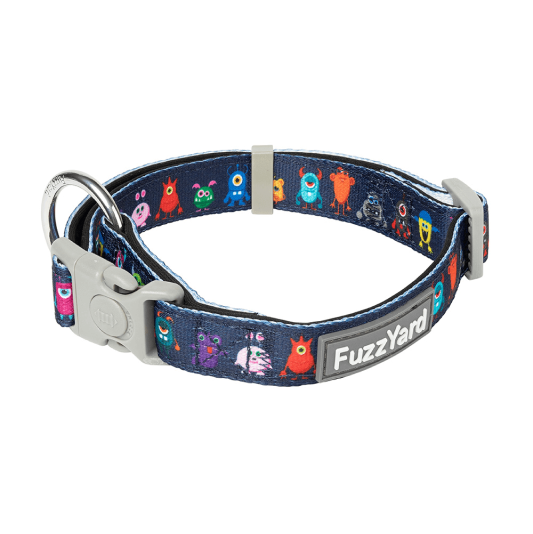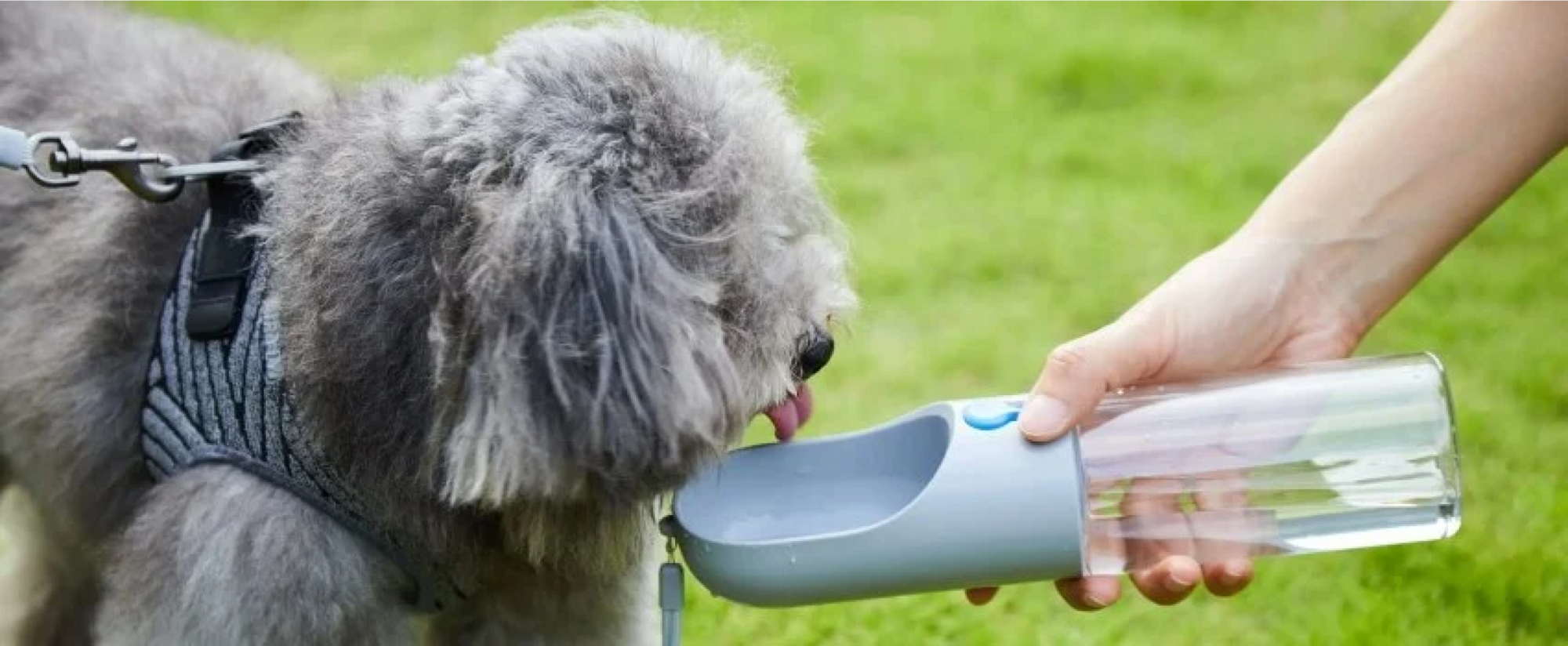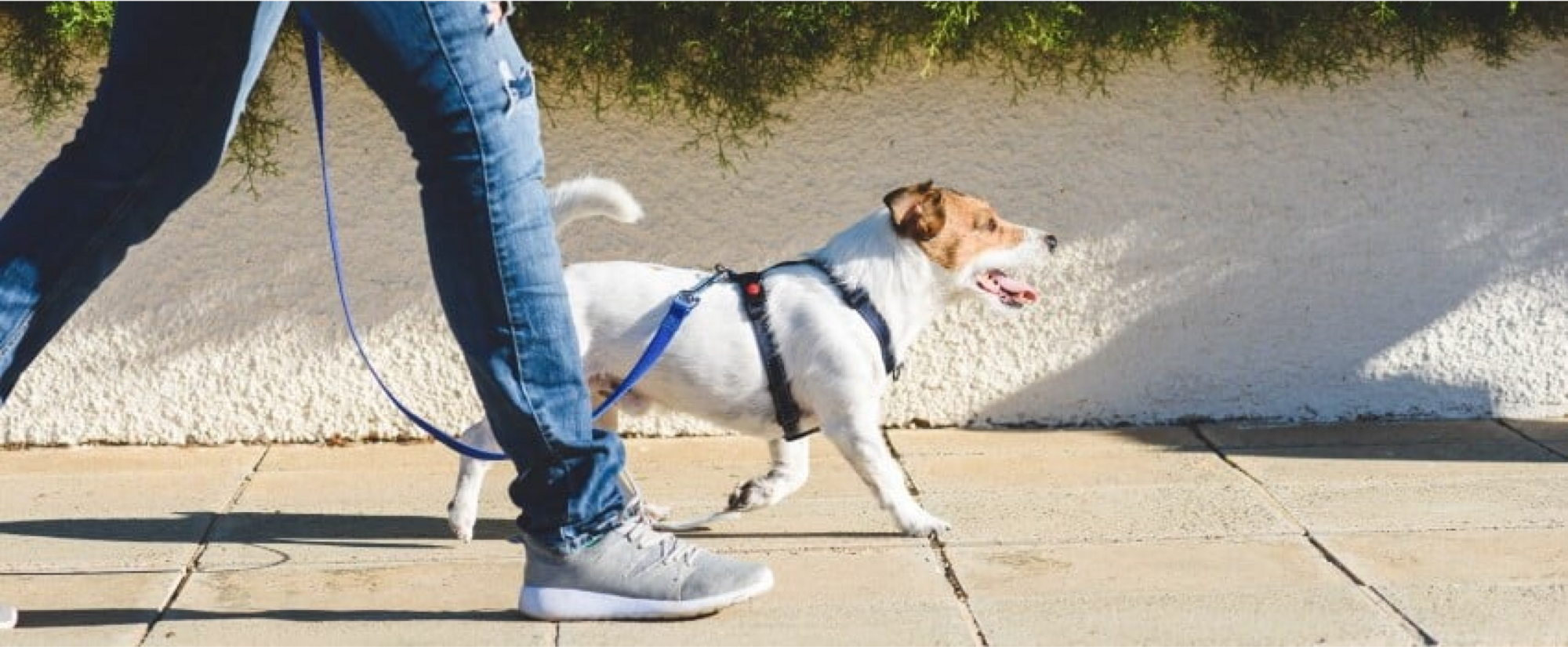Last Updated: 07/05/2025
Guide to Exercising Your Dog
Make sure you and your dog are well-prepared for your exercise adventures - take a read through our Vet-guide for all the things you should know.
Author: Dr Maree Monaghan BVSc (Hons)
Reading Time: 9 minutes - short read
Regardless of whether you share your life with an exuberant Terrier or a couch potato English Bulldog, exercising your dog is an essential part of being a good dog parent. All dogs need regular activity to provide them with physical and mental exercise and help prevent problems like obesity, anxiety and destructive behaviours.
Taking your dog for a walk has many benefits for you and your dog. It's a great way for you to get out and about, meet new people and their dogs and connect with your community. Regardless of where you live, there is always somewhere safe and interesting to explore with your canine companion.
Before you set off on your next adventure with your dog, it's important to make sure you and your dog are well prepared.
Contents:
Step 1: Vaccinations

It is vital that your dog is up to date with their vaccinations before you take them outside your home. Puppies in particular must have finished their first course of vaccinations as they are the most susceptible to picking up deadly diseases like parvovirus from the environment.
A typical vaccination course for puppies involves 3 injections spaced approximately 4 weeks apart. These usually occur at 6-8 weeks of age, 12-14 weeks of age, and 16-18 weeks of age but can vary depending on your location and the type of vaccine your vet uses. Once the puppy series has been completed your dog will need yearly, or in some cases three yearly, vaccinations for life.
In general, dogs in Australia are routinely vaccinated against Canine parvovirus, Canine Adenovirus (Infectious Hepatitis), Distemper and Kennel cough (Canine Parainfluenza II +/- Bordetella bronchiseptica). Additional vaccinations like Leptospirosis may be recommended in certain areas so consult with your local veterinarian for recommendations specific to your dog's needs.
While at the vets, this is a great opportunity to get your dog microchipped or update their microchip details. Microchips are a great way to ensure that if your dog becomes lost due to some sort of misadventure, then your details can be found quickly just by scanning their microchip. This will mean that your pet is returned to you as quickly as possible.
Remember: Vaccinations can take up to two weeks to have their full effect so, unless your vet has advised otherwise, avoid taking your puppy out and about, particularly to dog parks, beaches and other dog hotspots until 2 weeks after they have had their final vaccination.
Step 2: Parasite Prevention

The great outdoors is home to millions of creatures and, unfortunately, this includes parasites, their eggs and larvae that can infect your dog and make them unwell.
Ticks
The most serious of these unwelcome hitch hikers are ticks. There are three main tick species that affect dogs in Australia: The Brown Dog Tick, Bush Tick and Paralysis Tick. Ticks can occur in many areas of Australia but are more prevalent along the east coast. Ticks seek out a host and once attached begin to feed on off the animal's blood.
Bush Ticks are usually not life threatening but may irritate your dog where they latch on to feed. The Brown Dog Tick, while not harmful itself, can transmit tick-borne diseases such as Ehrlichiosis, a bacterial disease that recently occurred in Australia. Paralysis Ticks are the major concern in Australia as they can be deadly.
When it comes to ticks, prevention is better than cure. Ensuring your dog is covered with tick prevention year-round is the best way to protect your fur baby from deadly tick paralysis.
Products that Kill or Repel Ticks: Simparica Trio, Bravecto, Simparica, Seresto, Nexgard, Nexgard Spectra and Credelio Plus.
Fleas
Another freeloader waiting for the opportunity to hitch a ride to a new home is the flea. Despite your best efforts, your dog may become infested with fleas through contact with other animals or fleas that are roaming around in the environment. It's not always easy to spot fleas in your dog's fur, as they are swift and expert hiders! The best places to spot live fleas are usually over the rump or base of the tail in dogs. You may never actually see live fleas, instead, something to look for is flea dirt. Flea dirt is actually flea faeces or digested blood (Yuck!).
Products that kill fleas include: Simparica Trio, Bravecto, Simparica, Seresto, Nexgard, Nexgard Spectra , Advantage, Revolution and Credelio Plus.
For more info about flea prevention, see our article: How to Treat a Dog with Fleas.
Heartworm
A lovely stroll in the cool evening can often be spoiled by biting insects like mosquitoes. In addition to having a nasty sting, mosquitoes can also infect your dog with heartworm. When an infected mosquito bites a dog, it injects baby heartworm larvae, known as microfilaria, into their blood. These microfilariae make their way to the heart, where they mature and grow into adult heartworm.
Products that prevent Heartworm: Simparica Trio, Interceptor, Milbemax, Nexgard Spectra, Comfortis Plus, Sentinel, Advocate, Revolution, and Credelio Plus.
There is also an annual Proheart Injection available from your local veterinarian.
For more information read our veterinary written article Heartworm Facts Every Pet Owner Should Know.
Intestinal Worms
Last but by no means least, are intestinal worms. Intestinal worms range from small, microscopic strongyles to foot-long, squirmy tapeworms. Your dog can become infected with worms by picking up their eggs or larvae on their paws from the soil. These are then licked off and swallowed or burrow their way through the skin to your dog's intestines. Your dog may also contract worms by encountering other infected animals, drinking contaminated water or eating food that contains a worm parasite.
Dog products that treat intestinal worms include: Milbemax, Drontal, Interceptor, Sentinel, Paragard and Milpro.
*It is important to be aware that some worming products do not kill hydatid tapeworm. Tapeworm is large and more difficult to kill than smaller worm species, requiring a specific medication called Praziquantal. The selected products kill all important worm species, including tapeworm.
For more information on which preventative is best for your dog, consult our Preventative Comparison Chart.

Step 3: Choose An Appropriate Harness, Collar and Lead
Harnesses
There are five main types of dog harnesses to choose from:
Table Componenet
Collar
Using a traditional flat collar can be a good choice for some dogs. Using a flat collar is fine if your dog doesn't pull on the lead and if they have long hair that may get tangled in a harness.
Sighthounds like Greyhounds, Whippets and Salukis generally have a head that is narrower than their neck and so need a particular design of martingale collar. They also tend to have very fine hair and traditional flat collars can wear the hair away if the collar is left on.


Leads
There are many different types of leads to choose from including retractable, double and hands free.
Table Componenet
Step 4: Walking Essentials

Image features the Pet Kit Water Bottle.
The key to having a safe and comfortable walk with your dog is making sure you are well prepared for any eventuality.
Must have items to take walking include:
- Water Bottle- A supply of clean fresh water for your pooch is not only essential for drinking but can also be used for first aid purposes.
- First Aid Kit- Accidents do happen in the great outdoors so it is wise to carry some emergency first aid supplies just in case.
- Poo Bags- One of the less pleasant parts of walking your dog is the necessity to clean up after them. Ensuring you always have a good supply of poo bags with you will make it easier to leave no evidence of your pooch's pit stops.
- Treats- Reward based training is a great way to positively influence your dog's behaviour when out walking. You may even want to invest in a treat bag to store your treats, leaving you hands free.
Walking at Night
Waiting until the sun goes down is often the only option for safely walking your dog during summer. Brachycephalic dogs like Pugs, Boxers and Bulldogs are particularly susceptible to heat stress and should not be exercised when it is too hot or humid.
Increasing your dog's visibility at night will make your night time excursions safer and more enjoyable and there is a wide range of products to make your pup light up! These include reflective collars, and light up collars and tags.
Step 5: Lead Training Your Dog

Teaching your puppy to walk on a lead
Get your puppy used to wearing a collar by putting it on for short periods of time to begin with. If you notice them scratching at the collar try and redirect their attention with a game or short training session to take their mind off it.
Once they are used to the collar, you can start to get them accustomed to the feeling of the lead dragging behind. An easy way to do this is to attach the lead and let them run around or play in the backyard under your supervision.
Now you can start to pick up the lead and train your puppy to walk alongside you. Some dogs may just start trotting happily alongside you, but others can be more challenging.
What to do if your dog sits down and won't move
This is a common response initially, especially in puppies, as walking can be a new and potentially scary place. Overcome it by getting down on their level and enticing them to move forwards with a treat or favourite toy. As they move forwards give them lots of praise. Be patient with them and in time you will find that they become more confident about walking with you.
What to do if your dog pulls on the lead
Pulling on the lead means your dog is excited and can't wait to get out and explore the world!
- If your dog begins to pull, stop and call them back to you and praise them.
- Start walking again, this time with a handful of treats in the hand closest to the dog.
- Lure your dog along with the treats in the desired direction, giving them plenty of praise and a treat every few moments to reward the behaviour.
- If your dog begins to pull again, stop and call them back and repeat the process. Over time you can increase the interval between the treats from a few seconds to a few minutes and then longer as they start to get the idea.
This method will take time and patience but is an effective and gentle way to train your dog to walk at your side. If you are still having trouble with a dog that pulls, you could also try using a front-attaching harness or Halti headcollar. Halti headcollar are designed to distribute pressure across the bridge of the nose to discourage them from pulling.
It is important that you are patient with your dog while you are training them. Walking on a lead can be a challenge for them at first, but with perseverance, kindness and some tasty treats as motivation, you can train your puppy to walk nicely on the lead beside you.
For more information on lead training your dog? Read our veterinary written article How To Stop Your Dog Pulling On The Lead.
Walking your dog regularly doesn't just keep them fit and healthy, it also has benefits for you including lower blood pressure, reduced stress and increased cardiovascular fitness. Just be sure to stay safe and don't forget the poo bags!
Further Reading
Want to know more? Check out our Discover Page for more tips on keeping your pets happy and healthy.